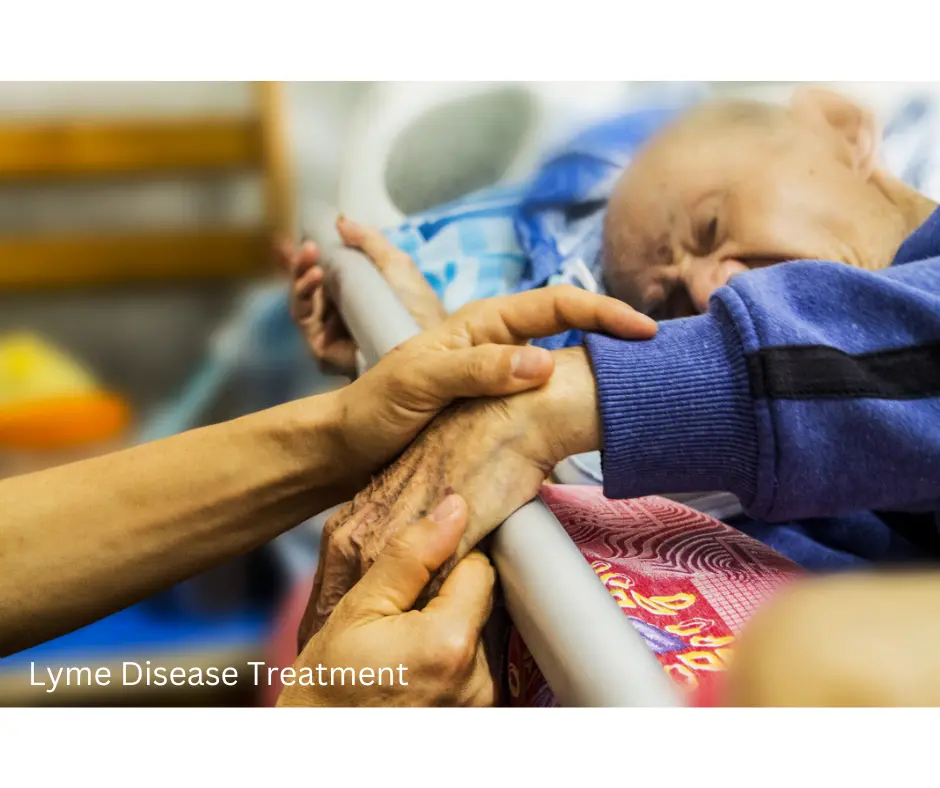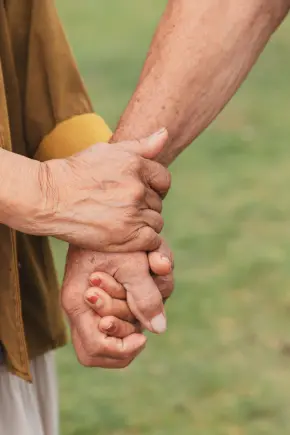Lyme Disease Treatment: Kicking the Tick to the Curb
This illness, carried by ticks, can lead to a range of symptoms, such as fever, headaches, fatigue, muscle and joint pain, and a distinctive bullseye-shaped rash. It’s caused by the Borrelia burgdorferi bacteria, which are passed to humans through the bite of an infected blacklegged tick.
While it’s most common in the northeastern, Midwestern, and southern U.S., it can be found throughout the country and is spreading to other regions worldwide.
Timely treatment is key to preventing serious health issues, like arthritis, heart problems, and neurological complications.
The good news is that this condition can be effectively treated with antibiotics, especially when caught early. If you suspect you may have it, don’t wait—seek medical attention promptly.
Here are some additional tips for preventing Lyme disease:
| Tip | Description |
| Avoid ticks | Avoid wooded spots and tall grass, especially during spring and summer when these bugs are most active. |
| Use insect repellent | Apply insect repellent containing DEET, picaridin, or IR3535 to exposed skin and clothing. Reapply every few hours, especially after sweating or swimming. |
| Wear protective clothing | Dress in long sleeves, full-length pants, and closed shoes when outside. Tuck pants into socks and top it off with a hat. |
| Check yourself and others thoroughly after being outdoors | After being outside, check yourself, your kids, and pets closely—especially under arms, around the ears, and behind knees. |
| Take off the bug as soon as you spot it | If you spot one stuck on your skin, grab it near the head with tweezers and pull straight out—no twisting or squeezing. |
| Monitor for symptoms | Look out for things like fever, chills, fatigue, achy muscles, or a red round rash. If anything feels off, go see someone ASAP. |
Treatment
When dealing with this tick-borne illness, one widely accepted method for addressing it involves prescription pills like doxycycline or amoxicillin. The number of days required for the medication cycle can vary depending on how far the condition has progressed. If caught early, about two weeks of medicine is usually sufficient to handle the problem.
However, in situations where it has spread or become more complicated—especially involving the nervous system or joints—more extended periods of prescribed drugs may be necessary. In some cases, taking the medication through an IV might be recommended, particularly for those experiencing more complex or persistent side effects tied to the condition.

Notable Hospitals and Specialists
When dealing with this type of condition, it’s essential to connect with experienced professionals who understand the complexities involved. These experts can run the appropriate tests, interpret results correctly, and guide you through a plan tailored to your individual needs. Accurate identification early on can make a huge difference in how the condition progresses and how you feel over time.
For those navigating this journey, some of the most reputable medical institutions across the U.S. have earned recognition for their excellence in managing related issues. These facilities bring together advanced research, experienced staff, and supportive resources to ensure you’re in good hands. Below are some of the top-ranked hospitals known for their deep knowledge and commitment in this area:
| Hospital Name | City, State |
| Hospital for Special Surgery | New York, NY |
| Johns Hopkins Hospital | Baltimore, MD |
| Mayo Clinic | Rochester, MN |
| Brigham and Women’s Hospital | Boston, MA |
| University of California, San Francisco Medical Center | San Francisco, CA |
| Stanford Hospital | Palo Alto, CA |
| Northwestern Memorial Hospital | Chicago, IL |
| Duke University Medical Center | Durham, NC |
| Hospital of the University of Pennsylvania | Philadelphia, PA |
| Vanderbilt University Medical Center | Nashville, TN |
Antibiotics
The following medications are frequently prescribed to address the bacterial infection transmitted through outdoor exposure:
| Antibiotic | Duration (Adults) | Duration (Children) |
| Amoxicillin | 14-21 days | 14-21 days |
| Doxycycline | 14-21 days | 14-21 days |
| Cefuroxime axetil | 14-21 days | 14-21 days |
| Azithromycin | 5 days | 5 days |
| Clarithromycin | 14 days | 14 days |
How Long Does It Typically Take to Feel Better?
The duration of prescribed medication can differ from person to person, typically ranging from 10 to 21 days. This timeline often depends on how far the condition has progressed and the person’s general well-being. It’s incredibly important to stick with the entire course of the prescribed regimen, even if you start to feel better early on. Completing the full schedule helps ensure that the unwanted bacteria are completely eliminated from the body, reducing the chance of complications or lingering issues later on. Stopping early could allow the infection to linger and possibly come back stronger.
Supportive care
| Supportive Care Measure | Description |
| Pain management | Store-bought relievers, prescriptions, and movement sessions. |
| Fatigue management | Energy-saving techniques, regular exercise, adequate sleep |
| Joint care | Wearing support gear and doing gentle joint exercises. |
| Mood and sleep management | Mood boosters, mindset support, and calming practices |
| Skin care | Gentle moisturizers, sun protection, avoiding scratching |
| Managing issues like brain fog, numbness, or coordination trouble. | Seizure meds, movement support, and daily activity help. |
Working with a physical movement specialist can help folks regain energy, improve mobility, and ease stiffness in joints and muscles. These guided exercises are especially helpful for those who’ve experienced prolonged fatigue or limited motion. With a tailored routine, individuals often find it easier to move around and perform everyday tasks.
Support from a daily function coach is also valuable. They focus on helping people adjust their routines and surroundings to better suit their current energy levels and physical limits. This kind of assistance makes things like cooking, cleaning, or even getting dressed more manageable and less overwhelming.
When it comes to emotional well-being, meeting with a trained counselor who specializes in behavior and thought patterns can be a game-changer. This support can help individuals navigate feelings of frustration, anxiety, or sadness that may come with a long-term illness. By learning coping strategies and building mental resilience, people can start feeling more in control and optimistic about their progress.
Managing Aches and Physical Strain

| Pain Management Strategy | Effectiveness |
| Nonsteroidal anti-inflammatory drugs (NSAIDs) | Fairly helpful for easing mild to moderate discomfort |
| Topical pain relievers | Fairly helpful for easing discomfort in a specific area |
| Corticosteroids | Highly effective for quick, short-term relief in intense cases |
| Antibiotics | Works well against the infection but doesn’t always ease discomfort |
| Physical therapy | Can help boost movement and ease discomfort |
| Alternative therapies | Some options might help a bit, but proof of their success is limited |
New Frontiers in Science: Exploring Experimental Options
Several experimental options are currently being explored for this condition. These include:
- Vaccines
- Immunotherapy
- Antibiotic combinations
| Treatment | Stage of development |
| OspA outer membrane protein (OMP) vaccine | Phase 3 clinical trials |
| C6 peptide | Phase 2 clinical trials |
| Fludarabine | Phase 2 clinical trials |
| Anti-Bb monoclonal antibodies | Early stage clinical trials |
How long does it take to recover from a tick-borne illness?
Illnesses passed on by certain outdoor insects can bring on issues like fever, headaches, skin rashes, extreme tiredness, and achy joints. While many people start feeling better with standard prescriptions, some may still feel off for several months—or even longer—after finishing their recommended meds.
The recovery time can vary based on factors such as how severe the illness is, the type of antibiotics prescribed, and the person’s overall condition. For many who are diagnosed and treated early, recovery typically occurs within a few weeks. However, some may continue to experience lingering symptoms, even after the infection has been cleared. This is sometimes called Post-Treatment Lyme Disease Syndrome (PTLDS).
There isn’t a universal timeline for recovery, but there are steps you can take to help your body heal and reduce the risk of long-term effects. These include:
- Getting plenty of rest
- Eating a balanced, nutritious diet
- Staying active and exercising regularly
- Managing stress levels
- Using over-the-counter pain relievers and anti-inflammatory medications as needed
If you believe you’re dealing with an illness linked to those tiny outdoor critters, don’t wait around—get checked out by a medical professional right away. Acting early can make all the difference in getting back to feeling like yourself. Remember, you’re not alone in this. You’ve got strength in you, and there are people ready to support you every step of the way. Keep your head up—you’ve got this!
When to see a doctor?

If you’ve spent time outdoors in areas known for certain insect exposures, especially wooded or grassy places, keep an eye out for any unusual changes in how you’re feeling. Should you experience anything out of the ordinary—like a strange rash, feeling unusually tired, or unexplained body aches—it’s a smart move to get checked out by a medical professional right away.
- A bullseye-shaped rash
- Fever
- Headache
- Fatigue
- Muscle aches
- Joint pain
- Stiff neck
- Swollen lymph nodes
- Facial weakness or drooping
- Nerve pain
- Heart palpitations
- Dizziness
- Shortness of breath
- Shooting pains, numbness, or tingling in your hands or feet
- Inflammation in the brain or spinal cord
Even if you don’t notice every possible sign, it’s still crucial to see a doctor if you’ve been bitten or have recently spent time in wooded or grassy places known for transmitting certain infections. Acting quickly gives your body a better chance to bounce back and allows professionals to guide you through the next steps before things get worse.
Navigating Each Day with Lyme: Practical Tips for a Positive Lifestyle
| Tip | Description |
| Prioritize sleep | Aim for 7-8 hours of sleep per night. |
| Eat a healthy diet | Focus on whole, unprocessed foods. |
| Manage stress | Practice relaxation techniques such as yoga or meditation. |
| Stay active | Find activities you enjoy and that fit your energy level. |
| Be patient | Healing from Lyme disease takes time. |
| Connect with others | Find a support group or talk to friends and family who understand. |
| Advocate for yourself | Be informed about your treatment options and communicate your needs to your doctor. |
| Celebrate small victories | Focus on the progress you are making, no matter how small. |
Conclusion
This condition can definitely bring some challenges, but the good news is—it’s something that can be managed with the right approach. When it’s identified early on, many folks are able to bounce back and feel like themselves again. If you start noticing unusual changes in your body—like feeling overly tired, dealing with ongoing aches, or spotting a strange rash—it’s important not to shrug it off. Getting checked out by a professional as soon as possible can make a big difference. And if you’re unsure about what you’re experiencing or just need some guidance, don’t hold back—reach out to a trusted medical expert who can walk you through what’s next.
